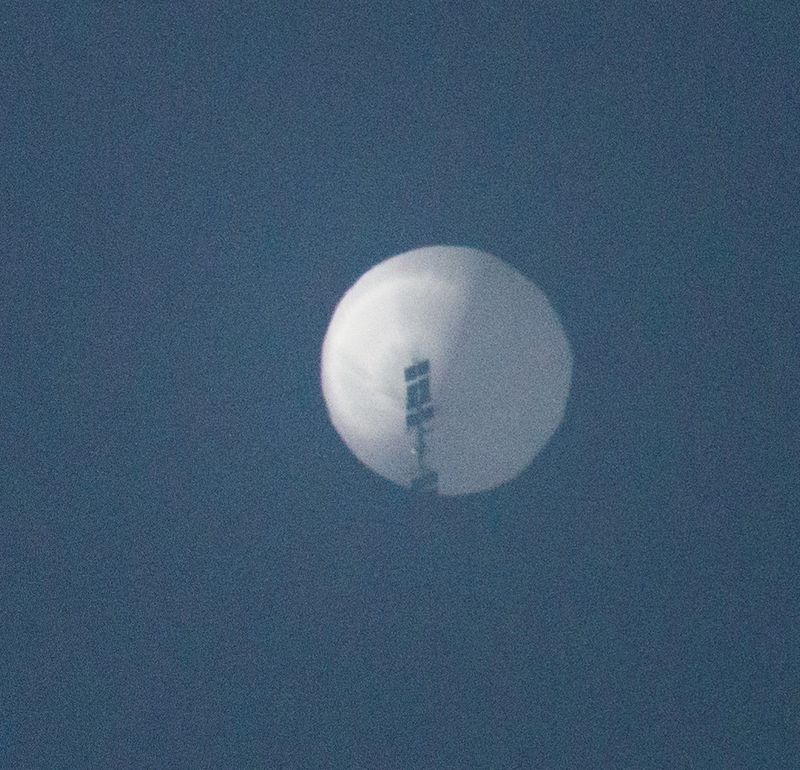In what is being called a “sophisticated espionage operation”, Chinese spies have reportedly been using high-altitude balloons to spy on the United States. The balloons, which can be as large as a house and float up to 20 miles above the earth’s surface, are equipped with sophisticated cameras that allow the Chinese government to record and monitor American activities from afar. This news has sent shockwaves through the US security community, prompting immediate action from various government agencies. But what exactly do we know about these Chinese spy balloons? In this blog post, we’ll explore five things you should know about them—from why they exist in the first place to how they might be used to spy on us. Read on for more!
What is the Chinese spy balloon?
During the Cold War, the United States and the Soviet Union were in a race to develop new technology that would give them an edge in the conflict. One area of research was in developing balloons that could carry payloads of spy equipment high into the atmosphere.
The Chinese spy balloon is a type of balloon that was developed by the Chinese military during the Cold War. These balloons were designed to carry payloads of spy equipment into the atmosphere, where they could be used to gather intelligence on the United States and its allies.
The Chinese spy balloon program was first revealed to the world in 1971, when a balloon carrying a camera was found in Canada. The balloon had been launched from China, and it is believed that many more such balloons were sent up during the course of the program.
The use of spy balloons by the Chinese military came to an end in 1980, after a series of embarrassing incidents in which balloons landed on American soil. The last known launch took place in 1981, and it is believed that the program has since been discontinued.
How was it discovered?
In 1945, a U.S. Navy ship discovered a large, unidentifiable object floating in the Pacific Ocean. Upon closer inspection, they realized it was a massive balloon with Chinese writing on it. The balloon was brought on board and eventually made its way to the United States, where it was identified as a Chinese spy balloon.
The discovery of the Chinese spy balloon sparked an investigation into its purpose and how it got there. It was determined that the balloon was part of a Chinese espionage operation aimed at gathering information about the United States. The balloons were sent across the Pacific Ocean in hopes that they would land in the United States, where they could gather information about military installations and other sensitive areas.
Although the discovery of the Chinese spy balloon caused alarm at the time, it ultimately did not lead to any major security breaches. The balloons were not equipped with sophisticated surveillance equipment, and their primary purpose appeared to be gathering general information about the United States. Nevertheless, the incident highlights the ongoing concern about foreign powers conducting espionage against the United States.
What are the implications of this discovery?
The Chinese spy balloon over the United States has implications for international relations, trade, and security. The discovery of the balloon is likely to increase tensions between the United States and China, as well as between the United States and other countries that have been critical of China’s spying activities. The balloon may also lead to increased scrutiny of Chinese companies doing business in the United States, and of Chinese citizens living in or visiting the United States.
How can the United States prevent future spying?
The recent discovery of a Chinese spy balloon near the city of Harrisonburg in the United States has raised concerns about Beijing’s intelligence-gathering activities. Here are five things to know about the incident:
1. What happened?
On May 25, 2021, a local resident discovered a Chinese spy balloon near Harrisonburg, Virginia. The balloon was equipped with cameras and other surveillance equipment, and it is believed that it was intended to collect intelligence on nearby military facilities.
2. How did the balloon get there?
It is unclear how the balloon arrived in the United States, but it is believed that it may have been carried across the Pacific Ocean by winds.
3. What is China up to?
The discovery of the spy balloon comes amid heightened tensions between the United States and China, as both countries compete for influence in Asia and beyond. In recent years, Chinese spies have been caught collecting intelligence on American military facilities, businesses, and universities.
4. How can the United States prevent future spying?
There are several steps that the United States can take to prevent future Chinese spying activities, including beefing up security at military bases and critical infrastructure sites, increasing counterintelligence efforts, and imposing sanctions on individuals and entities involved in espionage activities.
5. What does this mean for US-China relations?
The discovery of the spy balloon is likely to further strain relations between the United States and China. In recent months, the two countries have
Conclusion
In conclusion, the Chinese spy balloon is a clear example of the capabilities China has to potentially surveil other countries. It is important to understand what these balloons are and how powerful they can be in collecting data for the Chinese government. Furthermore, understanding how these balloons operate will give us insight into potential security risks that come from using similar technology from other countries as well. Finally, it is essential to know that no matter which country we live in, our privacy may never truly be 100% secure with this type of technology floating around out there.
